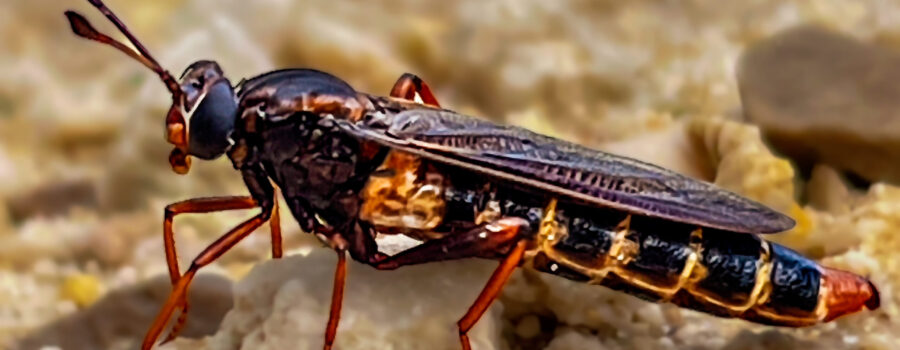Clubbed Mydas Flies are Really Great for Gardens

I must say, when I found this little guy running around on the ground near where I was photographing some wildflowers, I really didn’t know what to think. At first glance it looked like some sort of wasp, but closer observation showed that it had no stinging apparatus and it had only two wings, not four. Also, short, clubbed antennas are not a typical wasp characteristic. Needless to say, I was completely intrigued. As a general rule, I try to bother my subjects as little as possible and I’m definitely not in the habit of handling unknown insects, anyhow, but it turns out that this one is not only harmless, but it’s actually great to have around! Instead of being a potentially stinging wasp, it’s actually a type of fly, albeit an unusual type of fly. It turns out it’s a clubbed mydas fly (Mydas clavatus).

Clubbed mydas flies live in the eastern and southwestern United States and the adults feed on flower nectar, which means that they function as pollinators. Their larvae, however, feed on the grubs of a number of ground dwelling beetles, many of which are harmful to lawns, gardens, and ornamental plants. Mydas flies are a fairly small family and have not been well studied, but it is known that they are found mainly in the tropics and subtropics with a few living in temperate areas. They can be found in forests, grasslands, meadows, gardens, and parks. They lay their eggs in the rotting wood of downed trees or standing trees that aren’t healthy. Most species spend the majority of their lives as larvae and consume large numbers of beetle grubs. The adults are relatively short lived and tend to be on the wing in late spring to summer.

Most species of adult mydas flies mimic wasps which helps to deter predators. Interestingly, many of them are not found until the wasps have been active for awhile. This gives young, inexperienced predators ample time to have experienced the stings of wasps and to have learned to avoid them. It’s believed that this is why mydas flies tend to not be shy and are commonly found running around on open ground. When I encountered this one, I do have to say I was curious about its behavior (I’ve always been interested in behavior), but after my research, I suspect that it was a male, patrolling an area that would be considered good for egg laying by the females. We were near the edge of a wooded area that had numerous fallen oaks. It definitely didn’t seem at all concerned about me, but it did seem very busy and determined about whatever it was doing.




Recent Comments